Newsletter
2020 Battle of Warsaw Centenary
On August 28, 2020 at 10 am CDT (11am EDT), Piotr Puchalski will examine the role of the Polish-Soviet War in determining Western geopolitical aims.
Registration required Click here to register
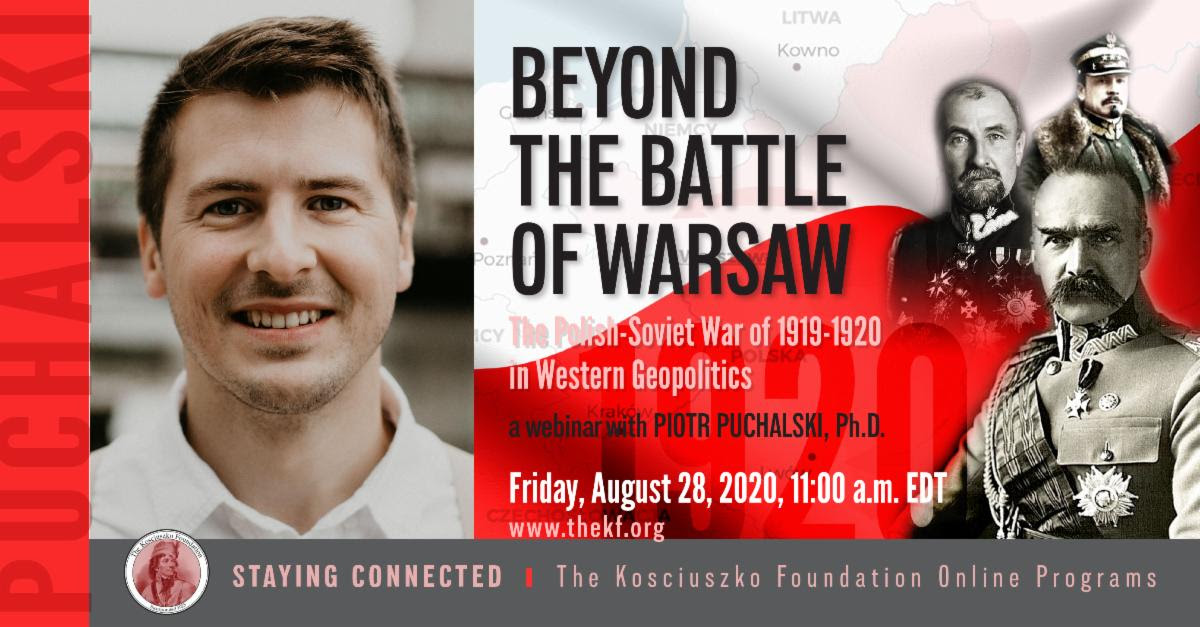
From the Kosciuszko Foundation website: Piotr Puchalski holds a Ph.D. from the University of Wisconsin-Madison and is an Assistant Professor of modern European history at the Pedagogical University in Kraków. He specializes in the diplomatic and political history of the interwar period. In his upcoming book, he analyzes the role played by colonial aspirations in the formation and development of the interwar Polish state.
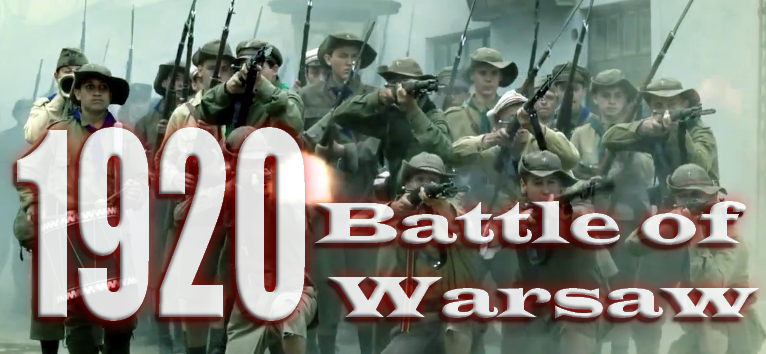 Background image: Young defenders of Warsaw pictured in the epic 3D movie
Background image: Young defenders of Warsaw pictured in the epic 3D movie
“1920 Battle of Warsaw” (pl. Bitwa warszawska 1920) directed by Jerzy Hoffman (2011)
downloadable exhibit
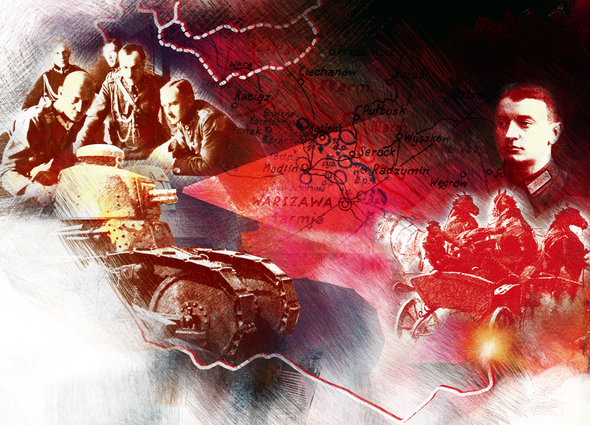
1920-2020
THE BATTLE OF WARSAW
Polish Victory for
European Freedom
The Battle of Warsaw is Won
100 Years Ago
Remarks by Prof. Emeritus Donald Pienkos
Fought August 13-20, 1920 between the armies of the newly restored Poland and revolutionary Bolshevik Russia, this great battle is also known as “the Miracle of the Wisla” or Vistula, Poland’s main river. Pitting two armies totaling over 250,000 combatants, the battle resulted in the Bolsheviks’ total defeat. As to its signify-cance, Britain’s ambassador to Germany, in Warsaw at the time, would call it “the 18th most decisive battle in world history.” Why was this Battle fought? Why was it so important?
On November 11, 1918, the very day the First World War ended with an armistice or truce in the trenches dividing Germany and France, General Jozef Pilsudski proclaimed Poland’s national rebirth in Warsaw. This came after 123 years of occupation by the empires of Russia, Austria and Germany. But proclaiming independence was one thing, making independence a reality and successfully defining its borders were very different matters. Indeed it would take the Poles more than two years of difficult negotiations along with plenty of fighting to accomplish these gargantuan tasks. For his part Pilsudski believed that for Poland to survive it needed to include the lands to the east that had been part of the old Polish Commonwealth going back to 1772. It was in that year that Russia, German Prussia and Austria had seized a third of the country in what became known as the first partition of Poland, the first giant step in the country’s destruction in 1795.
multimedia presentation
1920 BATTLE OF WARSAW
English Version…….Polish Version
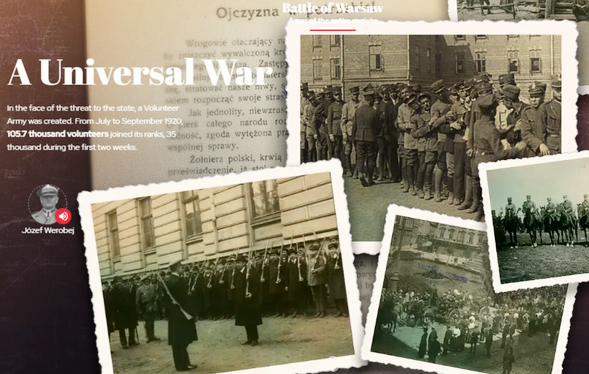
From the Great War (1914-1918) and the rebirth of Poland (1918), the show details the course of the Battle of Warsaw and its aftermath: A Free World to the West and a Prison of Nations to the East.
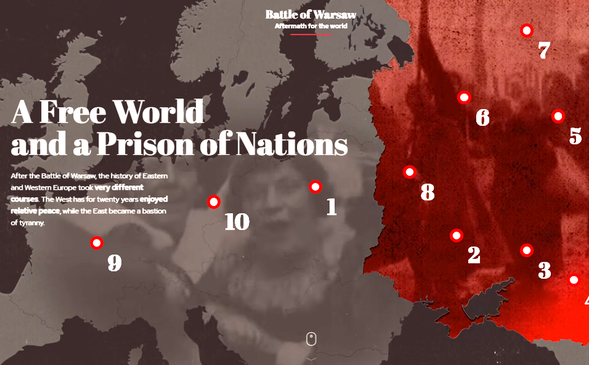
However, these eastern lands were inhabited mainly by non-Polish peoples – Ukrainians, Belorussians, and Lithuanians – with ethnic Poles comprising just 35 percent of the population. Still, Pilsudski believed these nationalities could be persuaded to be part of a new, federalized Polish state and in that way be liberated from the oppression they had endured under Russia – whether it was the Russia of the tsars or that of their new Bolshevik revolutionary successors led by Vladimir Lenin who had seized control of the empire in 1917. Indeed by 1919 Poland had become embroiled in a worsening border conflict with the new and radical regime in Moscow.”
By Spring 1920 Pilsudski had given up the idea of a restored multi-ethnic Commonwealth. Instead he made an agreement with the head of the latest Ukrainian national government in Kiev headed by Symon Petlura that aimed at guaranteeing Ukrainian independence from Soviet Russia. But in response an infuriated Lenin then ordered the mobilizing of a new and massive Bolshevik army to regain control of the Ukraine. Furthermore, he created a committee of Polish Bolsheviks under Felix Dzerzhinsky, who had organized the ruthless CHEKA special police force to secure the revolution in Russia. Dzerzhinsky’s group’s mission was to follow the “Red Army” in its invasion of Poland, unseat Pilsudski, and establish a puppet state subservient to Lenin.
As quickly as the Polish army had moved into Kiev in May 1920, just as quickly was it driven westward back into ethnic Poland. By the end of July the massive Red Army commanded by the 27 year old Mikhail Tukhachevsky was approaching Warsaw itself. Incredibly this war had exploded into a conflict that pitted over a million Bolshevik troops against about 750,000 Poles in a true fight to the death. In this war infantry, cavalry, tanks, armored locomotives, even airplanes would all see action.
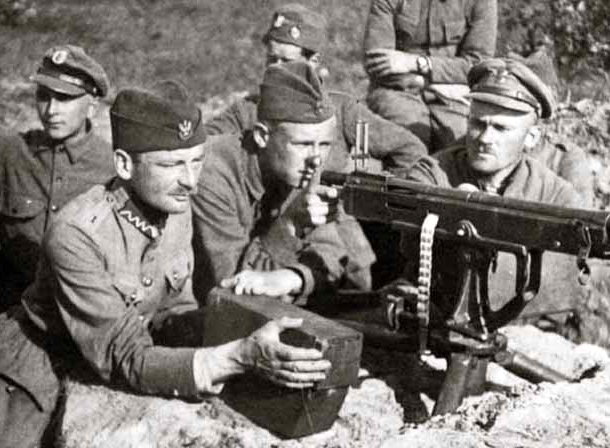 By July Poland was in a panic, its forces in seeming disarray. Pilsudski, the great hero in May was now condemned by his critics in Warsaw as the gravedigger of independence. Poland found itself abandoned by its supposed allies, France and Britain. But Pilsudski kept his head. He appointed Wincenty Witos, the popular leader of the Peasant party to be Prime Minister and called on him to rally the country’s vast peasantry to the nation’s defense. In response countless thousands of peasant farmers joined patriotic urban workers in the fight for Poland’s survival.
By July Poland was in a panic, its forces in seeming disarray. Pilsudski, the great hero in May was now condemned by his critics in Warsaw as the gravedigger of independence. Poland found itself abandoned by its supposed allies, France and Britain. But Pilsudski kept his head. He appointed Wincenty Witos, the popular leader of the Peasant party to be Prime Minister and called on him to rally the country’s vast peasantry to the nation’s defense. In response countless thousands of peasant farmers joined patriotic urban workers in the fight for Poland’s survival.
As the Bolshevik army neared Warsaw, Pilsudski got a lucky break when Polish crytographers got hold of Tukhachevsky’s plans. Pilsudski himself devised the strategy to defeat the massive invasion. Essentially his plan was to lure the Bolsheviks to attack the defenders of Warsaw from the east. As the battle commenced he then ordered most of his troops to wheel around from the south in a massive sweeping action against the invaders’ left flank. The plan worked. The Reds were totally surprised and thrown into panic. Of its 130,000 man army, over 20,000 were killed, 65,000 were captured, and another 35,000 were forced to flee into East Prussia where they were disarmed. In the Battle, the Poles lost about 4,500 men.
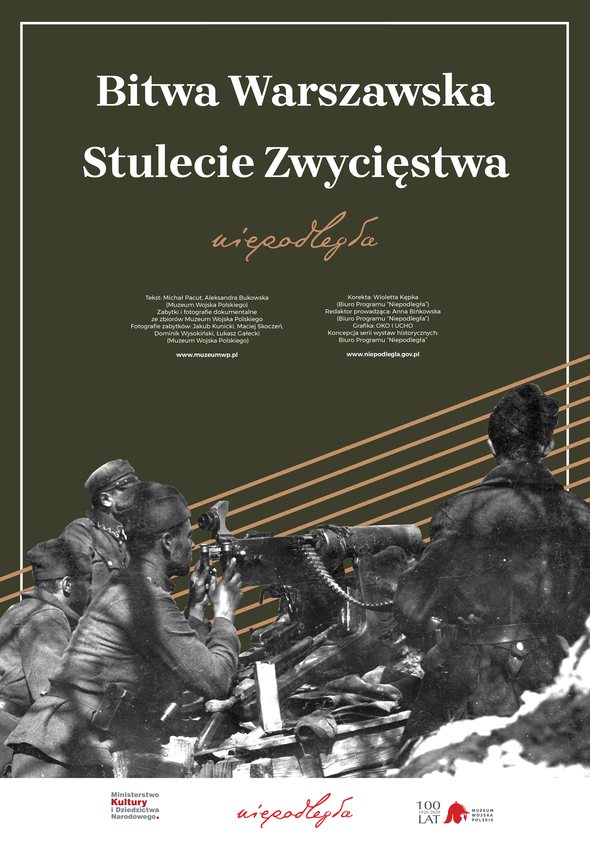
1920-2020
THE BATTLE OF WARSAW
Centennial of the Victory
exhibit only in Polish
Just two weeks later the remaining Red army forces under Cavalry Commander Semyon Budyonny and Josef Stalin were also crushed. By October Lenin was forced to call an end to the fighting. The Bolsheviks were forced to wake up from their dream of a victory over the corpse of the Polish ‘landlord state’ propelling the revolution into war-wrecked Germany itself. In March 1921 Poland and Russia reached a border settlement at Riga in Latvia. In it Poland gained some Ukrainian and Belorussian lands to the east. But most of the Ukraine and Belorussia was lost to the Soviet regime. Their peoples, including the Polish minority that chose to remain outside of Poland, would go on to suffer in horrific fashion in the years to come.
Josef Stalin was one Bolshevik who never forgot the debacle of 1920. As Lenin’s successor, in 1937 he ordered the execution of Tukhachevsky, a leader he hated. In August 1939 he and Adolf Hitler conspired to divide Poland between Soviet Russia and Nazi Germany as part of a pact that led to World War II just days later. In April 1940 he got more revenge in signing the death warrants for 24,000 captured Polish military officers and civic leaders in perpetrating an incredible (and long denied) war crime known as the Katyn Forest Massacre.
The battle of Warsaw was indeed a miracle in that victory saved the new Polish republic in 1920. Lenin’s dream of making victory over Poland the stepping stone to a violent European-wide revolution was also shattered.”
With victory, Pilsudski’s stature rose dramatically. However his political enemies remained unreconciled to him. In 1926 he did lead a coup against the government and established a regime of national moral reform (“Sanacja”). It would survive his death in 1935, only to be destroyed by the Nazi-Soviet invasions of 1939.
The monumental victory at Warsaw in August 1920 was thus not the “end of the story”. But it did allow the citizens of a reborn Poland to experience two critical decades of independence.
*Sources for the battle of Warsaw can be found in Richard Overy: A History of War in 100 Battles (Oxford University Press, 2014); pp. 75-79; and Adam Zamoyski: The Polish Way: One Thousand Years of Polish history and Culture (1985), pp. 335-339; M.K. Dziewanowski: Poland in the Twentieth Century (1977), pp. 80-84; and Wikipedia.
2020 The Warsaw Rising Remembrance
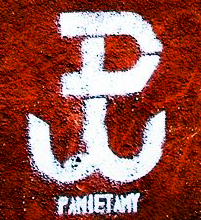
Honoring the Heroes
of Warsaw Uprising
on August 1 at “W” hour
(5 pm of Warsaw time, 10 am of CST)
In line with many years of tradition, thousands of Poles gathered at major intersections, squares and places of remembrance in Warsaw to honor the heroes of the Warsaw Uprising (8/1/1944 – 10/2/1944) with a minute of solemn silence held to the sounds of alarm sirens and dramatic illumination of handheld flares.
The uprising was the largest military effort undertaken by any resistance movement in the entire German-occupied Europe. About 40,000-50,000 insurgents gave their all to liberate Warsaw from German occupation. Help from the approaching Soviet Army never came and after 63 days of heroic effort, the revolt was brutally crushed. The death tool and destruction of the city was immense. Nearly 200,000 insurgents and civilians lost their lives, about 500,000 people were driven out of Warsaw and 85% of the city was razed to the ground in the course of systematic annihilation carried out in the months following the uprising.
The central observance took place at the Gloria Victis (“Glory to the Vanquished”) monument at the Powązki Military Cemetery in Warsaw. Much attention went this year to the Warsaw’s district of Wola, where Polish President Andrzej Duda paid tribute to the victims of the Wola Massacre. In this largest of the kind crime committed during the entire WWII, German soldiers slaughtered in just three days (August 3-5,1944) about 40,000-65,000 mostly civilians, including patients and staff of the Wola Hospital.
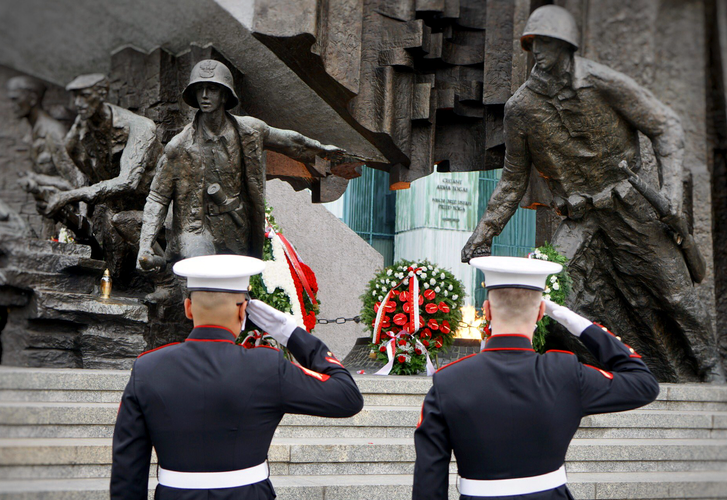
The memory of Warsaw Uprising was honored also by the ambassadors of the United States, Israel and Germany. Georgette Mosbacher, the U.S. ambassador to Poland, twitted: “On August 1, 1944, Poles embarked upon a heroic fight for their beloved city and homeland. Freedom is not free. Our Marines pay tribute to the fallen Heroes of the Warsaw Uprising.” and “As @POTUS said in Krasińscy Square in his speech to the veterans of the Warsaw Uprising: “We salute your noble sacrifice and we pledge to always remember your fight for Poland and for freedom.” 01.08.1944 – We remember!” In the article entitled “Heroes of Western Civilization: 76 Years After the Warsaw Uprising,” the White House recalls the main points of this speech while acknowledging it as “one of the most important speeches of his presidency.”
On the other hand, the German Embassy placed this somber message on social media: “As a sign of deep pain and shame caused by the crimes of the German occupier during the fighting with the population of Warsaw during the Warsaw Rising, the German embassy lowered the flags to half of the masts’ height. The Chargé d’affaires of the embassy has laid a wreath at the monument of Warsaw Rising.”
Selected media with information about the Warsaw Uprising in 1944
and its commemoration at the “W” hour each year.
2020 June/July News: Polish Elections, Polish Films Online and more
A SALUTE
On Sunday July 12, 2020, Poland held its Presidential election.
In spite of all the many difficulties created by the pandemic that has done such damage throughout the world, Poland’s voters turned out in record numbers to cast their ballots to elect the country’s president.
Congratulations are in order to the Citizens of Poland!
Indeed, once again, in this, Poland’s seventh national presidential election since Poland regained its freedom in 1989, the contest was defined by a
firm adherence to the highest principles of democracy.
Moreover, this election was exactly like those that came before.
Indeed, since the founding of the Third Republic of Poland in 1989, nine parliamentary elections, seven presidential elections, along with a host of local elections and several national referendums have been held. All have been conducted in the most proper manner conceivable.
Congratulations to the Citizens of Poland
From the Officers, Directors, and Members
Wisconsin State Division Polish American Congress
……
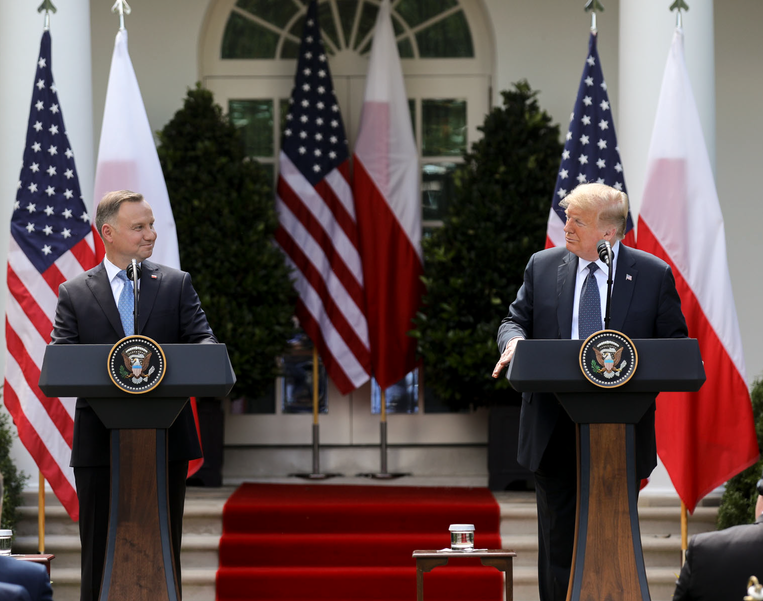
Polish President
visits the United States
June 24-25, 2020
Polish and US Presidents, Andrzej Duda and Donald Trump, agreed on Wednesday that Polish-American relations have never been better.
From the Joint Statement
signed after the White House talks:
“Poland and the United States share a centuries-old friendship and partnership based on shared values and interests, strong people-to-people ties, and mutual respect. Today we reaffirm the values that both our nations hold dear, especially democracy, the rule of law, individual liberties and freedoms, and free, fair, and reciprocal trade.”
The White House talks focussed on military security, energy independence, support for the Three Seas Initiative, cyber security and investments in new technologies.
The 2020 POLISH FEST (planned for June 11-13) is cancelled.
Good time to revisit the event photos taken over the last three years:
Polish movies streamed as part of the cinematic retrospective
STORIES FROM BEHIND THE IRON CURTAIN
Reverse (Rewers), June 25- July 1, 2020
Little Rose (Różyczka), July 2-8, 2020
All That I Love (Wszystko co kocham), July 9-15, 2020
REGISTRATION REQUIRED

Opportunity for children and teenagers of Polish descent to win valuable prizes in the contest
MY MOST INTERESTING MEETING WITH POLAND ONLINE
Submission deadline is June 30, 2020
Click here for the contest description and submission forms
2020 Poland: Virtual Tours
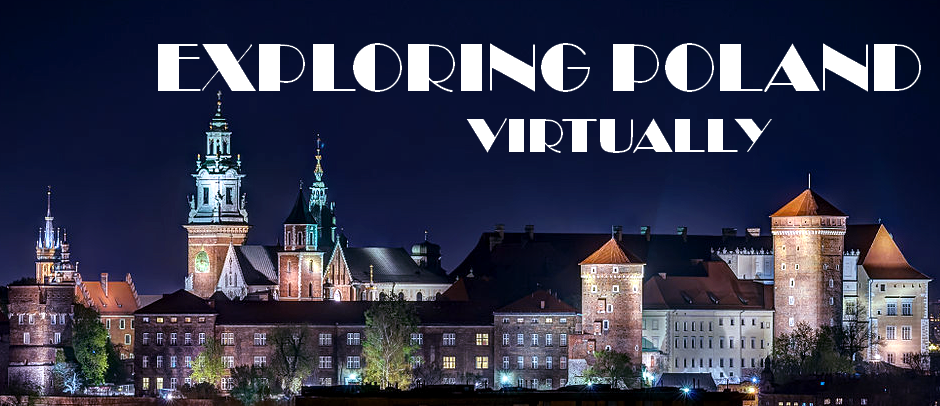
Wawel Royal Castle (Zamek Królewski na Wawelu): As part of the Cracow’s Historic Centre (the Old Town), the Wawel Royal Castle was among the very first sites inscribed on the UNESCO World’s Heritage list in 1978. The castle is one of the most historically and culturally significant 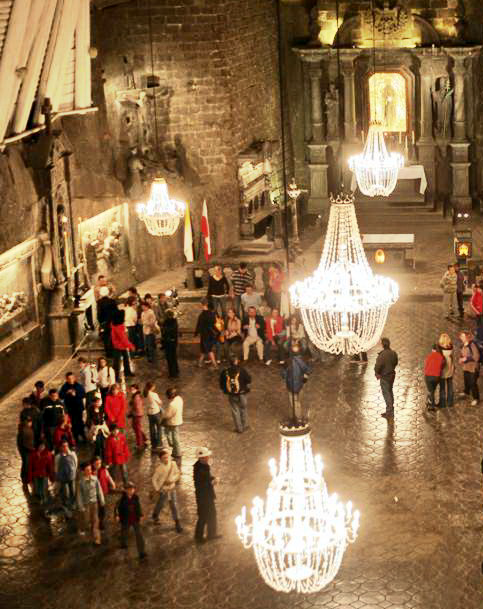 sites in Poland and the viewable online Lanckoroński Collection is one of its finests. Virtual tour link
sites in Poland and the viewable online Lanckoroński Collection is one of its finests. Virtual tour link
Wieliczka Salt Mine (Kopalnia Soli w Wieliczce): Existing since the 13th century, the mine was placed on the UNESCO’s list of World Heritage Sites in 1978 (the site extended later to include the Bochnia Salt Mine and Żupny Castle). The Wieliczka’s tourist route is about 3 km long, includes 20 chambers, located at depths from 64 to 135 meters, an underground lake and numerous statues carved in salt. Virtual tour link
Royal Castle in Warsaw (Zamek Królewski w Warszawie): Placed on the UNESCO’s list of World Heritage Sites along with the Old Town in 1980, it receives about 500,000 visitors a year. The castle was totally destroyed by German occupiers during the WWII and reconstructed in 1971-1984.Virtual tour link
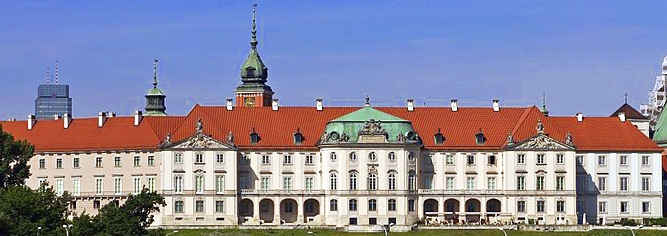
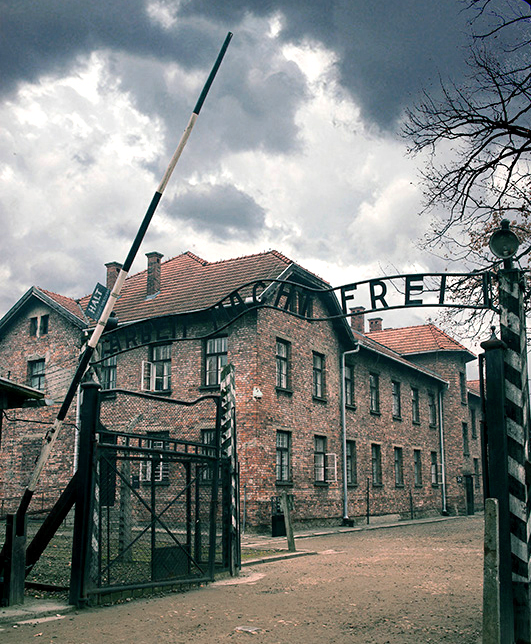
Auschwitz-Birkenau State Museum (Państwowe Muzeum Auschwitz-Birkenau): Placed on the UNESCO’s list of World Heritage Sites in 1979, the site’s name was changed to “Auschwitz Birkenau: German Nazi Concentration and Extermination Camp (1940-1945)” in 2007. The museum preserves the memory of the 1.1 million people killed in the camp during German occupation of Poland. Virtual tour link
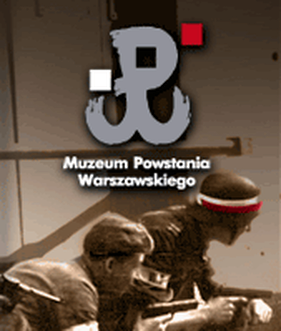 Warsaw Uprising Museum (Muzeum Powstania Warszawskiego): Opened to commemorate the 60th anniversary of the uprising in 2004, the museum preserves its history and materials (artifacts, documents) related to the Polish Underground State. Virtual tour link
Warsaw Uprising Museum (Muzeum Powstania Warszawskiego): Opened to commemorate the 60th anniversary of the uprising in 2004, the museum preserves its history and materials (artifacts, documents) related to the Polish Underground State. Virtual tour link
Malbork Castle (Zamek w Malborku): Placed on the UNESCO’s list of World Heritage Sites in 1997, this 13-th centuryTeutonic fortress is the largest castle in the world by land area and one of the finest examples of Gothic architecture. Virtual tour link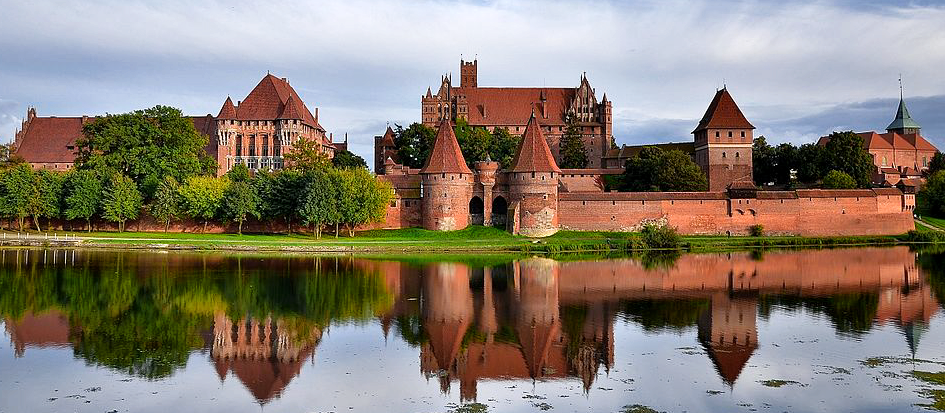
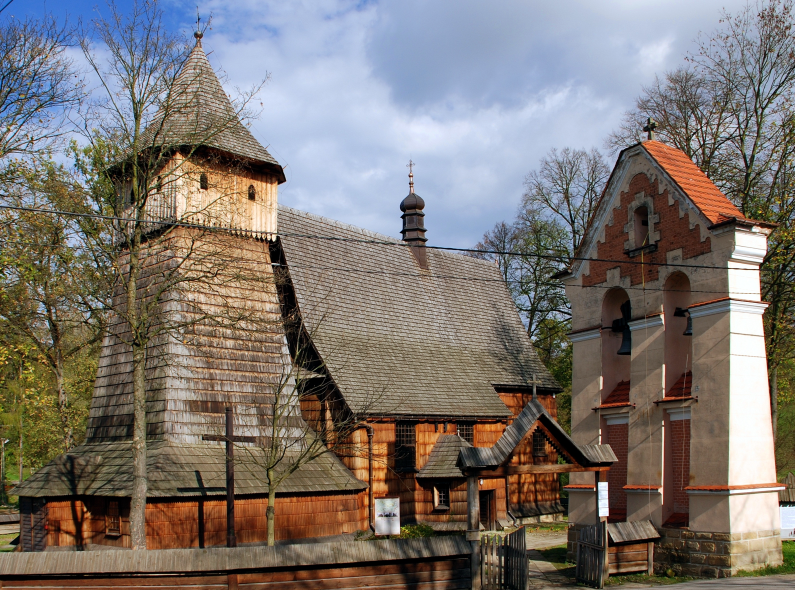 St. Michael Archangel’s Church in Binarowa (Kościół św. Michała Archanioła w Binarowej): Built around 1500 in Gothic style, this is one of the group of six wooden churches inscribed on UNESCO World’s Heritage list as Wooden Churches of Southern Lesser Poland. Virtual tour link
St. Michael Archangel’s Church in Binarowa (Kościół św. Michała Archanioła w Binarowej): Built around 1500 in Gothic style, this is one of the group of six wooden churches inscribed on UNESCO World’s Heritage list as Wooden Churches of Southern Lesser Poland. Virtual tour link
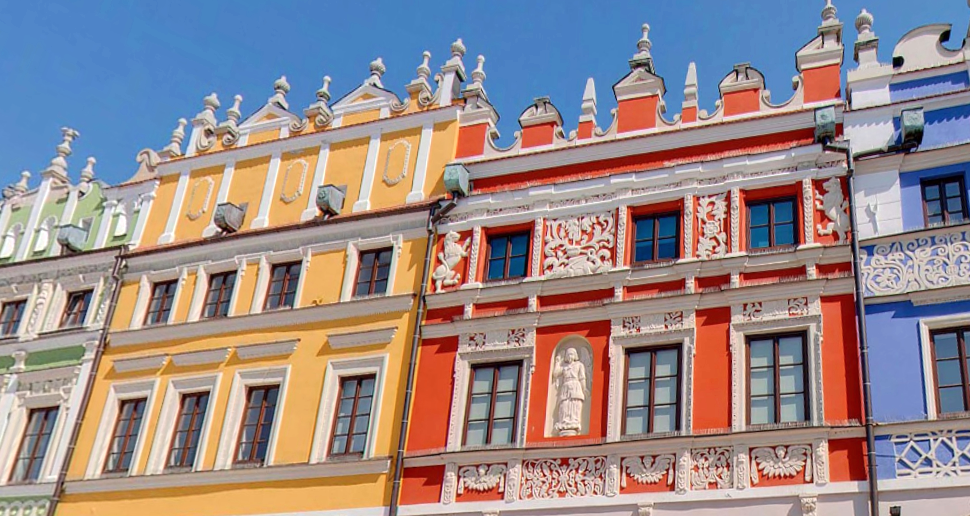 Old City of Zamość (Stare Miasto w Zamościu): Inscribed on the UNESCO World’s Heritage list in 1992, Zamość is a unique example of the late 16th century Renaissance urban designs based on the Italian theories of the ‘ideal city.’ Its Old Town has many historic buildings – including the so-called “Armenian houses” that nowadays hold collections of the Zamoyjski Museum, named by the city founders. Virtual tour link
Old City of Zamość (Stare Miasto w Zamościu): Inscribed on the UNESCO World’s Heritage list in 1992, Zamość is a unique example of the late 16th century Renaissance urban designs based on the Italian theories of the ‘ideal city.’ Its Old Town has many historic buildings – including the so-called “Armenian houses” that nowadays hold collections of the Zamoyjski Museum, named by the city founders. Virtual tour link
Zamoyski Museum in Kozłówka Palace (Muzeum Zamoyskich w Kozłówce): Belonging to the Zamoyski family between 1799-1944, the palace’s splendor reached its peak in early 20th century when owners aimed to turn it into the greatest aristocratic residence in Poland. Despite falling into the hands of Soviet Red Army in 1944, most artifacts survived untouched and the level of museum’s authenticity is very rare by European standards. Interestingly, the carriage house of the palace hosts now a museum of socrealism art. Virtual tour link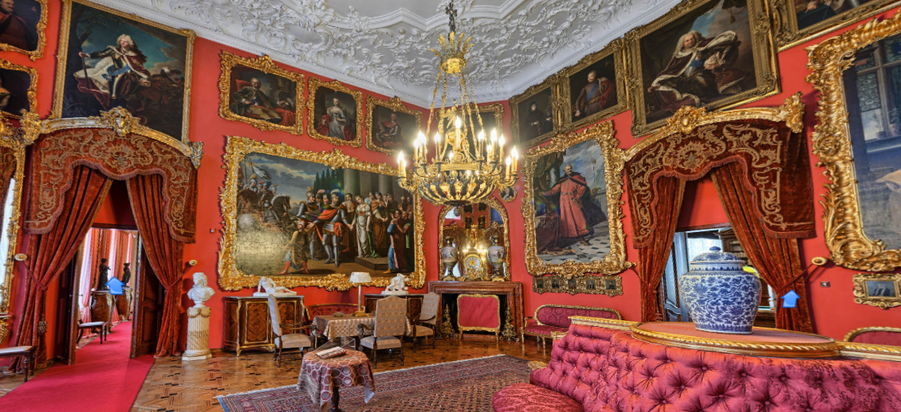
Archived Posts
- 2025 Polish Independence Day / Veterans Day invitation
- 2025 Millennium Lecture
- 2025 Millennium Concert
- 2025 Wianki Festival
- 2025 Remembering Katyń Massacre (1940) and Smolensk Tragedy (2010)
- 2024 Independence Day and Veteran Day invitation
- 80th Anniversary of the 1944 Warsaw Uprising
- 2024 Wianki Festival
- 2024 Polish Constitution Day in Wisconsin
- 2023 Merry Christmas
- 2023 Lighting the Light of Freedom on Dec 13 at 7:30pm
- Independence Day and Veteran Day invitation
- 2023 Wianki Festival
- 2023 May 3rd Constitution Day Celebration
- 2023 Lecture on Polish Borders by Prof. Don Pienkos
- 2023 REMEMBER THIS: Jan Karski movie premieres on PBS Wisconsin
- 2023 Upcoming lectures in the Polish Center of Wisconsin
- 2022 Polish National Independence Day
- 2022 Independence and Veteran Day Luncheon (invitation)
- 2022 Wianki, Polish Celebration of Noc Świętojańska (St. John’s Night)
- Celebrating Constitution of May 3, 1791 in Polish Center of Wisconsin
- 2022 Polish Constitution Day, Polish Flag Day and the Day of Polonia
- 2022 March Bulletin
- 2022 Polonia For Ukraine Donations
- 2022 Polish American Congress Condemns Russian Invasion of Ukraine
- 2022 PAC-WI State Division Letters to WI Senators and Representatives
- 2021 Polish Christmas Carols
- 2021 Panel Discussion: Martial Law in Poland 1981-1983 (REPORT)
- 2021 Panel Discussion: Martial Law. Poland 1981-1983 (invitation)
- 2021 Solidarity: Underground Publishing and Martial Law 1981-1983
- 2021 Polish Independence Day and Veterans Day
- 2021 Polish Independence Day and Veterans Day Luncheon
- 2021 Prof. Pienkos lecture: Polish Vote in US Presidential Elections
- 2021 POLISH HERITAGE MONTH EVENTS
- 2021 “Freedom” Monument Unveiled in Stevens Point, Wisconsin
- 2021 PCW Picnic and Fair
- 2021 Remembering Września Children Strikes (1901-1903)
- 2021 May 3 Constitution Day
- 2021 DYKP Contest Winners and Answers
- 2021 DYKP CONTEST EXTENDED and CASIMIR PULASKI DAY
- 2021 February announcements
- 2021 Polish Ministry of Education and Science oficials visit Wisconsin
- 2021 DYKP Contest, KF Gallery and Dr. Pease lectures
- 2020 Help Enact Resolution commemorating the 80th Anniversary of the Katyn Massacre
- 2020 Independence And Veterans Day
- 2020 Remembering Paderewski
- 2020 POLISH HERITAGE MONTH
- 2020 Solidarity born 40 years ago
- 2020 Battle of Warsaw Centenary
- 2020 The Warsaw Rising Remembrance
- 2020 June/July News: Polish Elections, Polish Films Online and more
- 2020 Poland: Virtual Tours
- Centennial of John Paul II’s Birth
- 2020 Celebrating Polish Flag, Polonia and Constitution of May 3rd
- 2020 Polish Easter Traditions
- 2020 Census and Annual Election
- Flavor of Poland (Update 3)
- 2020 Copernicus, Banach & Enigma talk
- 2020 Do You Know Poland and other announcements
| M | T | W | T | F | S | S |
|---|---|---|---|---|---|---|
| « Oct | ||||||
| 1 | 2 | 3 | 4 | 5 | 6 | 7 |
| 8 | 9 | 10 | 11 | 12 | 13 | 14 |
| 15 | 16 | 17 | 18 | 19 | 20 | 21 |
| 22 | 23 | 24 | 25 | 26 | 27 | 28 |
| 29 | 30 | 31 | ||||


